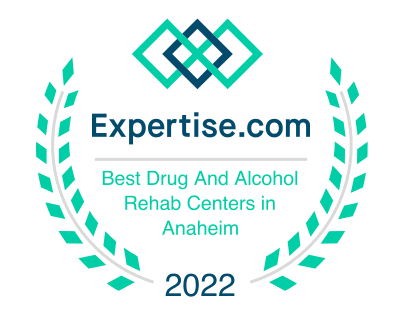Opioids have been a cornerstone in pain management for decades. However, understanding how opioids work and how opioid dependence begins is critical to addressing the ongoing opioid crisis responsibly. While often misunderstood, opioid dependence is rooted in the physiology of the brain and nervous system. In this blog, we’ll explain the process clearly and address some of the most common questions people have about opioids and dependence.
How Do Opioids Work? The Science Behind It
Opioids, whether prescription medications (e.g., oxycodone, hydrocodone, morphine) or illicit substances, act on the brain’s opioid receptors. These receptors are part of the body’s natural pain and reward systems.
When opioids enter the body:
- Binding to Receptors: Opioids attach to specific opioid receptors in the brain, spinal cord, and other areas of the body. These receptors are part of the mu-opioid receptor system responsible for reducing pain signals.
- Blocking Pain Signals: By binding to these receptors, opioids interrupt pain messages traveling from the body to the brain. This results in pain relief, making opioids effective for managing moderate to severe pain.
- Releasing Dopamine: Opioids also cause a significant release of dopamine, a neurotransmitter that regulates pleasure, reward, and motivation. This release creates a sense of euphoria or “high,” which is a major reason opioids carry such a high risk of misuse.
The dual effect of pain relief and dopamine release explains why opioids are both therapeutic and risky. While they provide needed relief, the overstimulation of the brain’s reward system can lead to long-term changes in brain chemistry.
How Does Opioid Dependence Develop?
Opioid dependence begins when repeated opioid use alters the brain’s chemistry, specifically the reward and survival systems. Here’s how:
- Flooding Dopamine: When opioids cause dopamine to surge, the brain quickly learns to associate opioids with pleasure and relief. This creates a strong reinforcement loop, driving the desire to repeat the experience.
- Tolerance: Over time, the brain adapts to the presence of opioids. It produces less natural dopamine and becomes less responsive to opioids, meaning higher doses are needed to achieve the same effect. This is called tolerance.
- Dependence: As tolerance builds, the brain starts to rely on opioids to function “normally.” Without opioids, people experience withdrawal symptoms, such as nausea, muscle aches, anxiety, and restlessness. Dependence is a physiological adaptation, not a sign of addiction.
- Misunderstanding Dependence vs. Addiction:
- Dependence is a natural consequence of prolonged opioid use, even when taken as prescribed. It refers to the body’s reliance on opioids to prevent withdrawal symptoms.
- Addiction is a behavioral condition marked by compulsive drug-seeking and use, despite negative consequences. Dependence does not always lead to addiction, but addiction always involves dependence.
- Understanding this distinction helps reduce stigma and allows individuals to seek proper treatment without shame.
Common Questions About Opioids and Dependence
1. Why Do Opioids Cause Euphoria?
Opioids stimulate the brain’s reward system by flooding it with dopamine. This rush of dopamine creates a powerful sense of pleasure or euphoria, which the brain remembers and wants to repeat.
2. How Long Does It Take to Develop Dependence?
Dependence can develop in as little as 1 to 2 weeks of consistent opioid use, even when taken as prescribed. Individual factors, such as genetics, dosage, and duration, influence how quickly dependence occurs.
3. What Are the Symptoms of Opioid Dependence?
The most common symptoms of opioid dependence include:
- Physical Symptoms: Withdrawal when opioids are stopped (e.g., nausea, sweating, diarrhea, muscle pain).
- Tolerance: Needing higher doses for the same effect.
- Preoccupation: Thinking about the next dose or experiencing anxiety if it’s delayed.
4. What Happens During Opioid Withdrawal?
Opioid withdrawal occurs when someone who is dependent on opioids stops taking them. Symptoms can range from mild to severe and include:
- Early symptoms (6-12 hours after the last dose): Anxiety, sweating, runny nose, restlessness, yawning.
- Peak symptoms (48-72 hours): Nausea, vomiting, diarrhea, muscle pain, chills, increased heart rate.
- Symptoms generally begin to improve after 5-7 days but can linger for weeks in some cases.
5. Can You Develop Dependence on Prescription Opioids?
Yes. Even opioids prescribed for legitimate medical reasons can lead to dependence over time. This happens because the brain adapts to the presence of opioids, reducing its natural production of dopamine and endorphins. Dependence is a predictable physiological response, not a moral failing, and can happen to anyone.
To reduce the risk, always take opioids exactly as prescribed and for the shortest duration possible. Avoid using opioids recreationally or taking them from unlicensed sources, as counterfeit pills often contain fentanyl, which can be life-threatening even in small amounts.
Understanding the Brain’s Role in Dependence
The brain’s plasticity (its ability to adapt) is at the core of opioid dependence. When opioids repeatedly trigger the brain’s reward system, the brain starts reorganizing itself:
- The natural production of dopamine decreases because the brain “expects” opioids to supply it.
- Opioid receptors become less sensitive, requiring more opioids to achieve the same effect.
- The brain becomes less responsive to natural rewards like food, social interaction, or exercise.
This physiological process underscores why dependence is not a matter of “weak willpower” but a biological consequence.
Preventing Opioid Dependence: What You Should Know
Understanding the risks of opioids can help prevent dependence:
- Use Only as Prescribed: Follow your doctor’s guidance closely, and avoid increasing the dose without medical advice.
- Avoid Recreational Use: Never use opioids recreationally or take them if they are not prescribed to you. Medications obtained outside a pharmacy carry a significant risk of fentanyl poisoning, as many counterfeit pills are laced with dangerous substances that can be fatal, even in small amounts.
- Short-Term Use: Limit opioid use to the shortest duration necessary for pain management.
- Monitor Symptoms: Be aware of signs of dependence, such as developing a tolerance (needing higher doses) or experiencing withdrawal symptoms when reducing or stopping use.
- Explore Alternatives: Non-opioid pain treatments, like physical therapy, NSAIDs, nerve blocks, or other targeted therapies, may be safer long-term options.
Educating yourself and others about the dangers of recreational opioid use and counterfeit drugs is crucial. The risk of unintentional fentanyl poisoning has made non-prescription opioid use life-threatening, underscoring the importance of only using medications as directed and from trusted, licensed sources.
The Importance of Seeking Medical Treatment
While dependence is a natural response to opioids, trying to detox alone can be dangerous and unnecessarily painful. Medical detox programs, like the Waismann Method, use science to ensure the process is effective, compassionate, and safe.
Why Medical Detox Matters:
- Reduces withdrawal discomfort.
- Prevents complications, like dehydration or cardiovascular issues.
- Provides emotional and physical support during a vulnerable time.
Final Thoughts: Knowledge and Compassion Are Key
Opioids work by altering brain chemistry to block pain and release dopamine, but this same process can lead to dependence. Understanding the science behind opioids allows us to view dependence as a medical condition that requires proper treatment—not judgment.
Medical advancements like the Waismann Method® show that opioid dependence can be safely reversed with professional care, offering individuals a true opportunity to reclaim their lives. However, the first few days after detox are critical for both physical and emotional stabilization.
This is where Domus Retreat provides unparalleled support. As the only licensed aftercare facility exclusively specializing in opioid detox, Domus Retreat offers a private, compassionate, and professionally supervised environment to assist patients during those crucial days of physiological adjustment. With personalized care, emotional support, and the expertise of healthcare professionals, individuals can regain strength and confidence as they prepare to face life with renewed clarity and stability.
With the right knowledge, support, and treatment, freedom from opioid dependence is not only possible but achievable.
Sources:
- National Institute on Drug Abuse (NIDA) – How Do Opioids Affect the Brain and Body?
How opioids interact with the brain’s reward system, alter neurotransmitter function, and cause physiological dependence. - National Institutes of Health (NIH) – The Science of Opioids – How opioid drugs activate receptors
The biological pathways opioids target, the nervous system’s adaptations, and the physiological consequences of opioid use. - Cleveland Clinic – Dopamine and Brain Chemistry
How opioid use disrupts brain chemistry, dopamine pathways, and nervous system function. - Harvard Health Publishing – How Opioids Work in the Brain
A clear, concise breakdown of how opioids influence the brain’s reward centers, pain signals, and dependency mechanisms.







